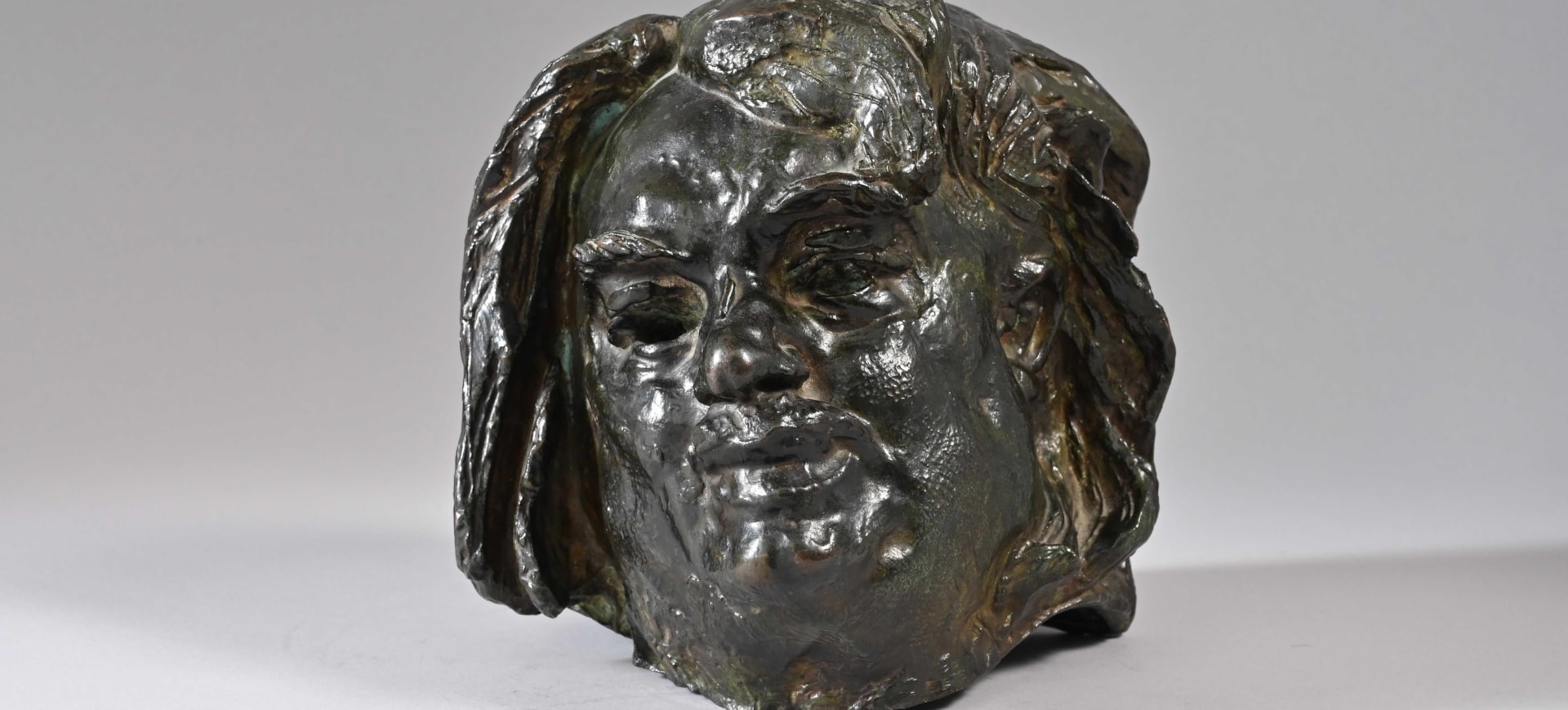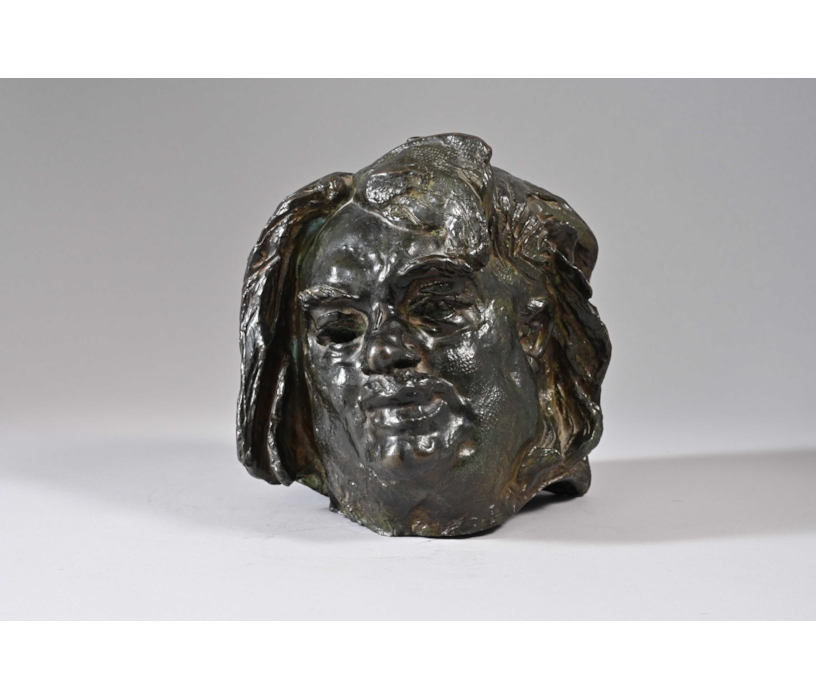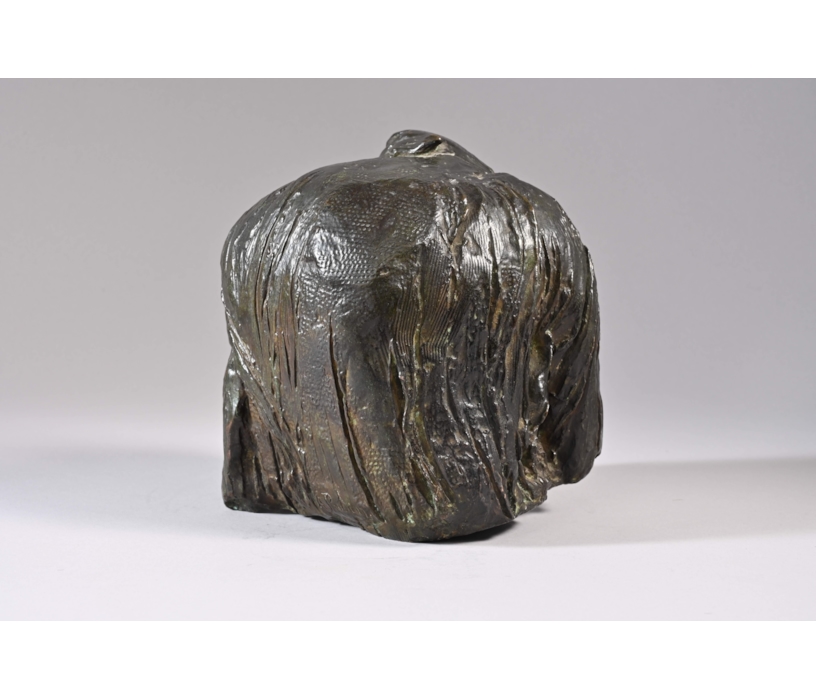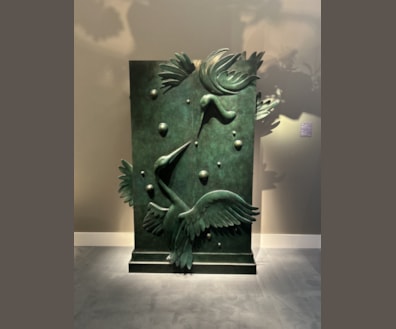
Auguste RODIN
( 1840 - 1917 )
BALZAC (tête) avant dernier état
Bronze, richly shaded green brown patina.
H : 19,4 cm, L : 18,5 cm, D : 18,2 cm
Lifetime cast signed "A Rodin", sand cast and work probably by Auguste Griffoul.
Cast circa 1897-1903
Edition details :
At least eleven lifetime casts identified today, with seven in museums collections including the one at the musée Rodin.
literature
TANCOCK John L. (dir.), "Balzac" in The sculpture of Auguste Rodin. The collection of the Rodin Museum Philadelphia, Philadelphia, Philadelphia Museum of Art, 1976, pp. 425-459.
LE NORMAND-ROMAIN Antoinette (dir.), 1898 : le Balzac de Rodin, catalogue de l’exposition (Paris, musée Rodin, 1998), Paris, Musée Rodin, 1998.
LE NORMAND-ROMAIN Antoinette, "Balzac, dernière étude pour la tête" in Rodin et le bronze. Catalogue des oeuvres conservées au Musée Rodin. Vol. 2, Paris, Musée Rodin/Réunion des musées nationaux, 2007, pp. 177-178.
About the founder :
LEBON Elisabeth, "Auguste Griffoul" in Dictionnaire des fondeurs de bronze d’art : France 1890-1950, Perth, Marjon Editions, 2003, pp. 172-174.
Detailed Description
Balzac, who died in 1850, is then an icon of modern literature, a sulphurous writer with undeniable talent, worthy of the constant search for innovations of the master of Meudon. After the death of Henri Chapu who was initially supposed to carry out the commission, Emile Zola asked Rodin for a new version of the monument. Balzac is therefore studied in his entirety, nude well camped on his legs (the foundation of his notoriety and his genius) or dressed in the famous bathrobe dipped in plaster by Rodin, which gives him this monolithic appearance, as thought by Bourdelle. The writer is also studied as fragments, of the hands but also especially of the face, the only truly identifying element in Rodin’s project. The project, too Modern when it was presented to the public in 1897, was not finished.
Balzac’s head exists in different variants or states, with or without a visible cut from the robe, with or without hair (mask). For the penultimate condition that concerns us, Rodin keeps the hair flowing. Our lifetime example probably cast by Griffoul has an exceptional surface subtly highlighting the traces of damp linen on the cheekbones that are part of the creative process of this sketch model. It should be noted that this example has not been mounted on a marble or onyx base unlike most other models of the head, which gives it a very modern look.
We identify at least 11 examples of this version cast between 1897 and 1909 for Rodin. The closest example in term of cast and treatment is the example from the Pembroke College in Oxford. A posthumous example cast by Alexis Rudier by the Musée Rodin in 1931 has been identified to this day (today at the Hirshhorn Museum in Washington)
You may also like












